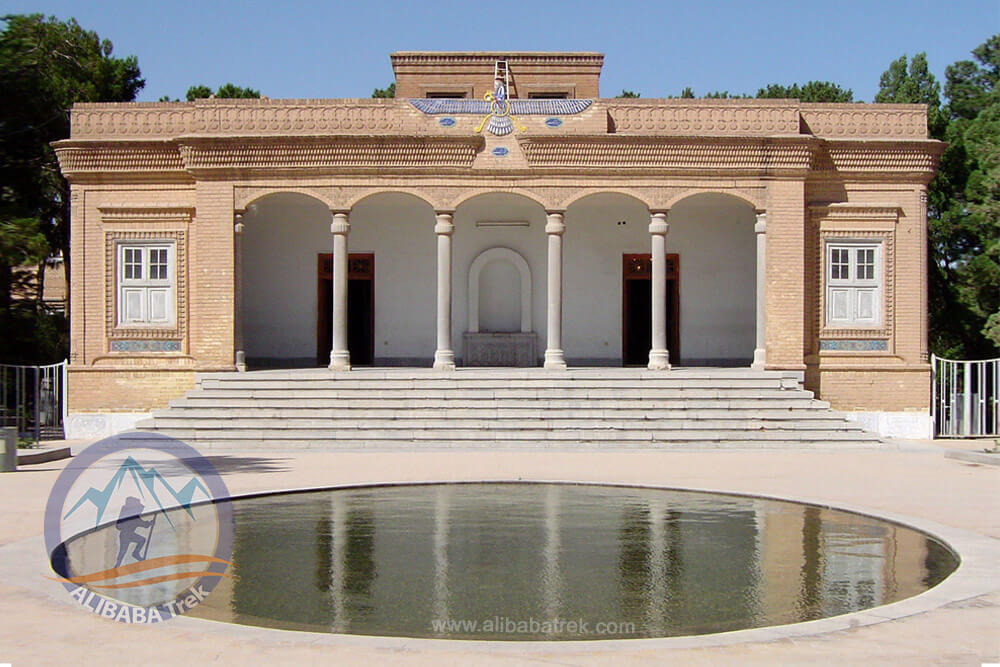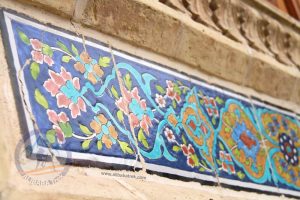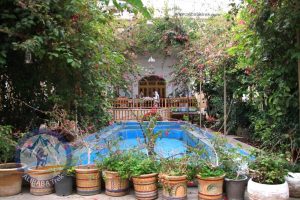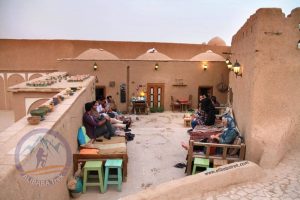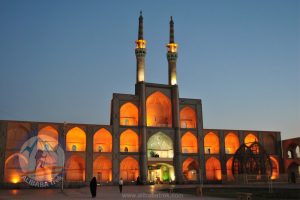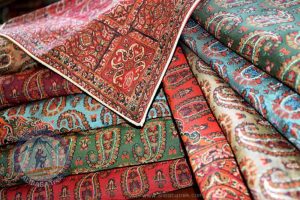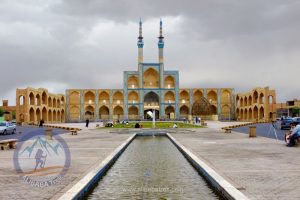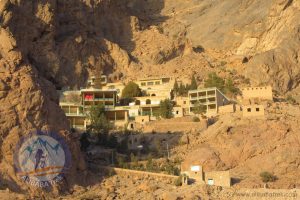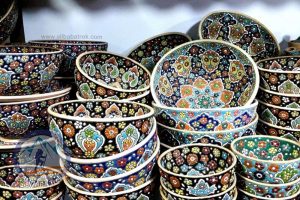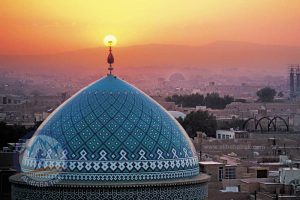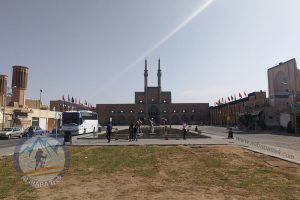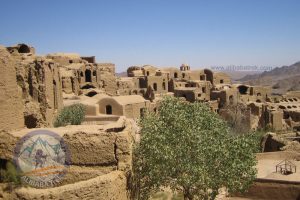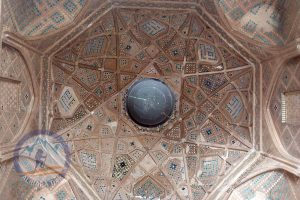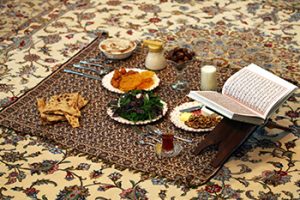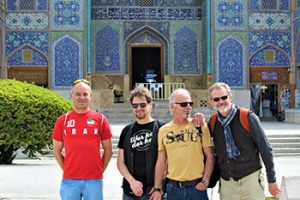Yazd
Yazd has a history of over 5,000 years, dating back to the time of the Median empire when it was known as Ysatis or Issatis. The present city name, however, is derived from Yazdegerd I, a Sassanid ruler of Persia.
The City of Wind Towers
Yazd has a history of over 5,000 years, dating back to the time of the Median empire when it was known as Ysatis or Issatis. The present city name, however, is derived from Yazdegerd I, a Sassanid ruler of Persia.
Yazd (Persian: یزد, /jæzd/ ), formerly also known as Yezd, is On a flat plain ringed by mountains, the city is wedged between the northern Dasht-e Kavir and the southern Dasht-e Lut …(Two of the great salt desert)… It may not have the big-ticket sights of Isfahan or Shiraz, but, with its atmospheric alleyways and centuries of history, it exceeds both in its capacity to enchant.
The city has an interesting mix of people, 10% of whom follow the ancient religion of Zoroastrianism. An elegant ateshkadeh (fire temple) near the city center shelters an eternal flame which is open to all.
Yazd is always known not only for the quality of its silk and carpets but also ceramics and construction materials and unique confectionery and jewelry industries.
Because of generations of adaptations to its desert surroundings, it has a unique Persian architecture it will take only a few minutes before you feel lost in the maze of Narrow Street with arches. They are extremely picturesque and charming but still, most of them look just the same.
It is the place for sweet teeth with its special Qottab and Baklava, if you are one do not miss it.
Ateshkadeh
Often referred to as the Zoroastrian Fire Temple, this elegant neoclassical building, reflected in an oval pool in the garden courtyard, houses a flame that is said to have been burning since about AD 470. Visible through a window from the entrance hall, the flame was transferred to Ardakan in 1174, to Yazd in 1474 and to its present site in 1940. It is cherished (not worshipped) by the followers of the Zoroastrian faith – the oldest of the world’s monotheistic religions.
With wings outstretched to represent good thoughts, good words and good deeds, the Fravahar symbol graces the entrance of the building. The downward-pointing tail feathers symbolize bad thoughts, words, and deeds while the large ring suggests the dualism of good and evil. The bearded man, the representative of aged wisdom, holds a smaller ring signifying loyalty.
The museum houses a few relics and, of more interest, a set of informative panels explaining some of the principles and customs of the Zoroastrian religion, which dates back some 5000 years. There are about 4000 Zoroastrians living in Yazd, one of the largest such concentrations in Iran.
Dowlat Abad Garden
Once a residence of Persian regent Karim Khan Zand, this small pavilion set amid Unesco-listed gardens was built around 1750. The interior of the pavilion is superb, with intricate latticework and exquisite stained-glass windows. The pavilion also boasts Iran’s loftiest badgir; standing over 33m tall, it was rebuilt in the 1960s. The pretty garden, built on the traditional Persian garden principle of symmetrical design, is planted with soaring evergreens and dotted with sour orange and pomegranates.
There’s a coffee shop on-site and some craft shops by the door. Note the unattractive but hygienic modern take on a water fountain: it dispenses disposable straws.

Amir Chakhmaq Mosque Complex
The stunning three-storey facade of this Hosseinieh is one of the largest such structures in Iran. The rows of perfectly proportioned sunken alcoves are at their best and most photogenic in the late afternoon, when the copper-colored sunlight is captured within each alcove and the towering exterior appears to glow against the darkening sky. New two-storey arcades hem the pedestrianized square and illuminated fountains lend an attractive foreground to the splendid vista at night. Only the 1st floor of the structure is accessible.
A huge wooden palm nakhl (cypress tree-shaped wooden structure) is parked under the Amir Chakhmaq. An important centerpiece for the observance of Shiite Ashura commemorations, this nakhl is over 200 years old and is no longer moved. During Ashura, it is draped in a black cover for a day or two around the celebrations to represent the coffin of Imam Hossein. Illusions to cypress trees, and by association the nakhl (which in fact means date palm), predate Islam and signify immortality, resistance and freedom – qualities that have come also to be associated with the Shiite imam, Imam Hossein.
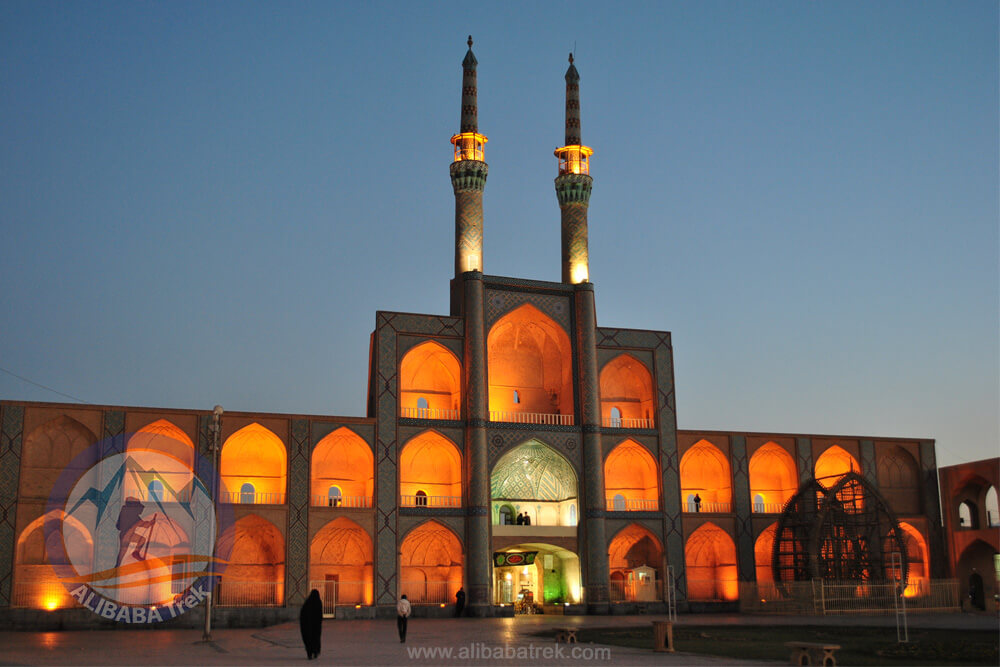
Jameh Mosque
Soaring above the old city, this magnificent building is graced with a tiled entrance portal (one of the tallest in Iran), flanked by two 48m-high minarets and adorned with inscriptions from the 15th century. The exquisite mosaics on the dome and mihrab and the tiles above the main western entrance to the courtyard are masterpieces of calligraphy, evoking sacred names in infinitely complex patterns.
Built for Sayyed Roknaddin in the 15th century, the mosque is built on 12th-century foundations over a former fire temple and with access to the Zarch Qanat (a stairwell leads down to part of this ancient water channel but is closed to the public).
The Jameh Mosque is particularly notable for the prevalence of faience – a form of tiling that, like mosaic, is formed of different colored pieces that are sandwiched together to create the design. These predate later uniform tiling, which feature painted designs. The gardoneh mehr (swastika symbol) used on some tiles symbolises infinity, timelessness, birth and death, and can be found on Iranian buildings dating back as early as 5000 BC.

Yazd Water Museum
Yazd is famous for its qanats (underground aqueducts) and this museum, one of the best of its kind, is devoted to the brave men who built them. Located in a restored mansion with a visible qanat running underneath, the museum offers, through a series of photographs, exhibits and architectural drawings, a fascinating glimpse into the hidden world of waterways that have allowed life to flourish in the desert.
The uniform of the qanat builders shows an early form of Personal Protective Equipment (PPE), with padded cotton hats and white-colored clothing that was both luminous in the dark and would act as a shroud in the event of a fatal accident.
The museum, which charts the 2000 years that Iran’s unique irrigation system has been in operation, describes the drilling of mother wells (which can reach a depth of 300m, such as the qanat near Mashad) and the use of water distribution clocks. These clocks (basically a bowl with a hole in the bottom) helped to mark out the 15- or 20-minute shares of water purchasable by householder or farmer.
Qanats run through many of the wealthy old houses in Yazd, collecting in pools in basements known as sardob.
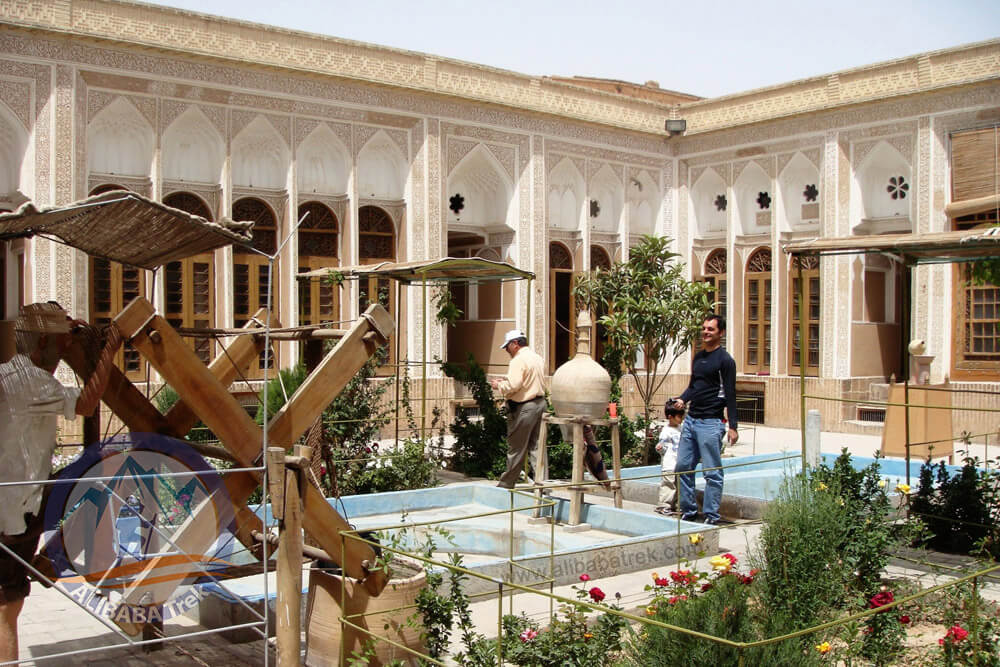
Saheb A Zaman Zurkhaneh
The cavernous ab anbar (water reservoir), built around 1580, resembles a 29m-high standing egg from the inside. Crowned with five burly badgirs, this impressive piece of architecture stored water for much of the city until modern irrigation made it redundant. The building has found a new purpose as a zurkhaneh (house of strength) in which javan mard(gentlemen) exercise using heavy wooden clubs to build muscle. The practitioners of this ancient sport are expected to display chivalrous values and embrace high integrity.
Visitors are permitted to sit around the central exercise area (shoes should be removed) and watch the exercise sessions. These are accompanied by rhythmic drumming that helps the whirling individuals to reach almost religious heights of concentration.

Kharanaq
The all-but deserted mud-brick village of Kharanaq (Kharanagh) is crumbling back into the valley out of which it emerged over 1000 years ago. What remains in this ghost town, 70km north of Yazd, is a Qajar-era mosque, a cylindrical 17th-century shaking minaret and a caravanserai (closed at the time of research), near the entrance of the village. Although these structures have been restored, many of the surrounding buildings are in various states of ruin so it’s helpful to have a guide who can navigate a safe pathway to the highlights.
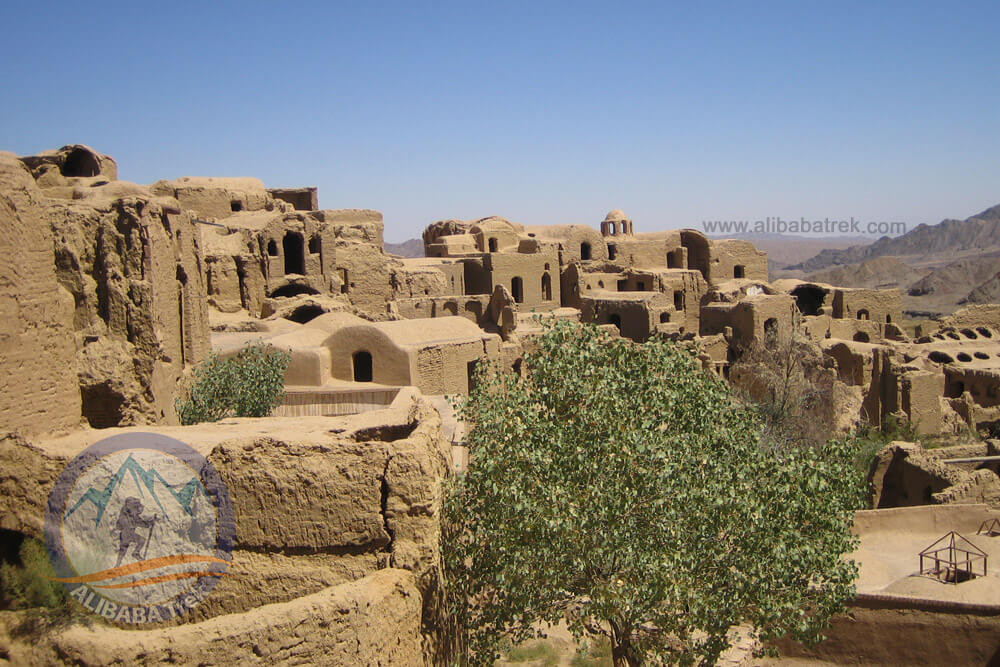
Chak Chak
High above the desert floor, under a cliff with a venerable old tree, this sacred site has great significance for Zoroastrians. Thousands of pilgrims come here each year to pay their respects and especially during an annual festival held between 14 and 18 June.

Yazd Photo Gallery
General Info
- Population: 1,138,000
- Area: 70011 km²
- Elevation: 1,216 m (3,990 ft)
- Climate: Desert
- Avg. Annual Temperature : 18.9 °C
UNESCO Heritages
- The historical city of Yazd
- Culture


A unique Persian culture tour
Have a unique experience of exploring the rich Iranian culture with this Iran tour package. Furthermore, this Iran tour needs 11 days to show you the most famous historical sites in Iran. During this Iran travel tour, you will visit great cultural cities of Iran including Isfahan, Tehran, Kashan, Yazd, and Shiraz.
- 11 Days
- 4 Seasons
- Phys. Rating: 1 out of 5
- Culture


Explore the Iranian culture in two weeks
Enjoy spending time in the historical cities of Iran and visiting their cultural attractions thoroughly with this Iran travel tour. Spend only two weeks with this Iran tour to see the most important cultural cities of Iran. Moreover, optimized Iran tour package includes visiting Tehran, Kashan, Isfahan, Yazd, and Kerman.
- 14 Days
- 4 Seasons
- Phys. Rating: 1 out of 5
- Culture
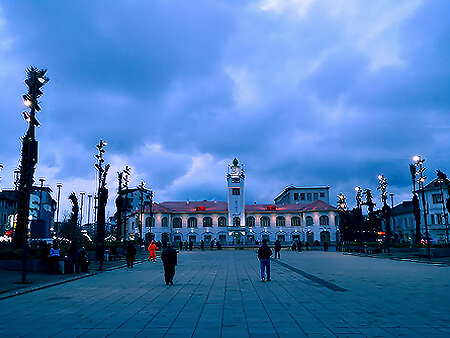

Exploring Iran thoroughly and completely
The best Iran tour for those who have enough time and want to explore Iran completely. During this Iran travel tour, you can visit Tabriz, Ardabil, Rasht, Qazvin, Hamedan, Kashan, Yazd, Shiraz and… By joining our most comprehensive Iran tour package you can visit all of the important cities of Iran.
- 21 Days
- 4 Seasons
- Phys. Rating: 1 out of 5
- Adventure & Culture


Desert Path to Ancient Persia
A culture and adventure mixed tour including both sightseeing in the historical cities of Iran and surfing in the deserts. This comprehensive Iran tour includes visiting cities such as Tehran, Kashan, Isfahan, Yazd, and Shiraz. Also, we will pay a visit to deserts such as Maranjab, Ring-e Jenn, and Mesr. So, don’t miss this tour if you have an interest in both sightseeing and desert trekking.
- 14 Days
- Oct. to May
- Phys. Rating: 2 out of 5
From
1399 €

